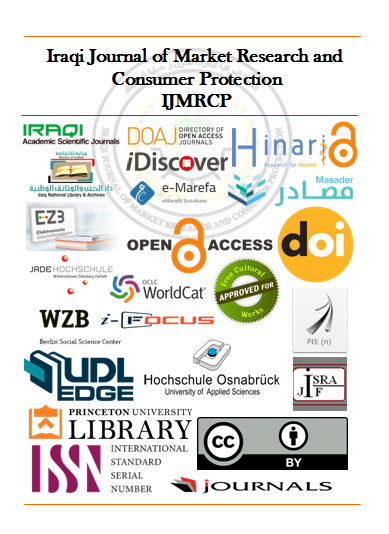PHYSIOLOGICAL RESPONSE OF APRICOT TRANSPLANTS TO AMINO ACIDS ADDITION AND SPRAYING WITH GLUTATHIONE AND KAOLIN
PHYSIOLOGICAL RESPONSE OF APRICOT TRANSPLANTS TO AMINO ACIDS ADDITION AND SPRAYING WITH GLUTATHIONE AND KAOLIN
Keywords:
apricot, glutathione, kaolin, organic fertilizers, physiological response.Abstract
This study was conducted in a lath house, Dept. Of Hort. and Landscape, College of Agricultural Engineering Sciences, Univ. Baghdad, Al- Jadriya during 2022 growing season to investigate influence of liquid organic fertilizer (Siapton 10 L) and spraying with glutathione and kaolin on some vegetative growth characteristics and leaf mineral content of two year's old of "Red" apricot transplants. Factors of study experiment included addition of two levels of liquid organic fertilizer (Siapton 10 L) containing a group of amino acids to soil ,without addition (S0), and 3 ml L-1 (S3), while glutathione spray was sprayed with three levels; without spray (G0), spraying at 200 mg L-1 (G200) and spraying at 400 mg L-1 (G400), As for kaolin spray, they were sprayed in three levels (0, 500, and 1000 mg L-1), which are denoted by symbols K0, K500, and K1000, respectively. The experimental results showed that liquid organic fertilizers at 3 ml L-1(S3) significantly increased in stem diameter of 9.52 mm, highest leaf potassium content of 1.77%, leaf water content of 70.99 % and decreased in leaf proline content of 4.90 µmol.gm fresh weight-1. Results also showed that glutathione spray especially at 400 mg L-1 (G400), showed significant superiority in increased in stem diameter of 10.07 mm, leaf potassium content of 1.76 % and leaf water content of 70.51 %. Kaolin spray also affected, especially spraying at 1000 mg L-1 and gave highest increasing of stem diameter of 9.47 mm, highest leaf potassium content of 1.77 %, leaf water content of 71.00 % and decreased in leaf proline content of 4.65 µmol.gm fresh weight-1.
Published
Issue
Section
License
Copyright (c) 2025 Iraqi Journal of Market Research and Consumer Protection

This work is licensed under a Creative Commons Attribution 4.0 International License.





